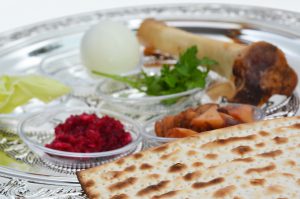< Lesson 11: Making Salad on Shabbos
Lesson 12: Preparing Fruits and Vegetables for Serving on Shabbos
This lesson’s topic was touched upon in the previous few lessons, but I don’t think it’s as clear as I would have liked it to be, so I think it warrants a lesson unto itself. This is the topic of borer.
One of the 39 restricted activities on Shabbos is borer – selecting – separating bad from good.
The 3 Rules of Permissible Selecting
The formula to remember what you are allowed to do on Shabbos is:
- Ochel – separating good from bad – the food that you’re eating, as an act of eating, as opposed to removing the bad part that you don’t want to eat.
- Biyad – not using an implement that is made for selecting – such as a sieve or a sifter – but using your hand as part of eating (a piece of cutlery is considered an extension of your hand).
- Miyad – right at the time that you are preparing to eat it.
- We said when you’re peeling an egg, you’re taking the shell, the part that you don’t want to eat, from the part that you’re going to eat, but that is a permissible act of borer because it’s the only way to get to the egg.
- That would need to be done right before you eat the meal, when you come home from shul as you’re preparing for lunch and preparing the egg salad; not in the morning when you wake up and say, “I want to be able to start the meal when we come home so let me make the egg salad before.” Peeling the eggs wouldn’t be permissible then because that’s peeling the eggs for a later use.
- It’s only permissible, even when you are doing the borer in a permissible way, if it’s miyad, for immediate consumption.
Practical Application of the Borer Formula
Let’s go over these conditions with some examples:
- Ochel – you are supposed to take the food from the pesoles, from the bad.
- For example, if you want to serve a bowl of blueberries, and some are spoiled: This doesn’t look nice in my serving bowl – I don’t want to present to my guests blueberries that are moldy, so the natural inclination is just to take the moldy ones and throw them in the garbage.
- But that would be taking the bad from the good – we’re not supposed to do that. What can you do? You can take a spoon and take a few blueberries, not only the one that’s no good but also some of the ones that are edible, and put them on the side. This way you haven’t just taken the bad from the good, but you removed a mixture from a mixture. That’s okay.
- Now you have a bowl of blueberries that’s presentable and you can serve it the way you want to serve it.
- As a side point, the prohibition of borer, selecting the bad from the good, is the reason Ashkenazi Jews have the tradition of eating gefilte fish. If you have a fish in front of you that’s not filleted, bones together with the flesh, separating the bones could be a borer action, so if you make gefilte fish, there are no bones, and you avoid that problem.
- Biyad – take it with your hand rather than with an implement.
- In the previous lesson, we showed that you’re allowed to take a lemon and squeeze it onto fish, onto a solid, but not into a liquid such as tea.
- When you squeeze a lemon, there are pits that often come out. You don’t want the pits together with your fish, so you might take a cheesecloth, squeeze it with the cheesecloth, the lemon juice will come out and the pits will be held back. But the cheesecloth is made to hold the pit in and let the juice go through, so you shouldn’t use this on Shabbos.
- On Shabbos, you should take the lemon and squeeze it directly on your solid. If the pits come out and are on top of the fish – they’re not mixed in – you can take it out, because borer is only when there’s a mixture.
- If it’s mixed in, just eat around it and try not to eat the pits. Otherwise it would be a problem.
- In previous lessons we discussed whether you’re allowed to use a peeler. Is a peeler -something that separates the peel from the cucumber – an implement that is considered designated for selecting? Rabbi Moshe Feinstein considered it to be okay, that it’s like a knife. Others disagree. You should ask your rabbi what to do for yourself.
- Miyad – All of the above must be done immediately prior to the meal.
Some More Common Examples
Let’s go through some other practical issues that come up.
Just as with the bowl of blueberries, I’d like to serve some peanuts.
- Peanuts come in a shell. You’re allowed to removed them from the shell for immediate consumption. But in addition to the shell, there’s a red skin that I don’t want to eat.
- In this bowl that I prepared, there are some hollow shells, and I don’t need to serve those. People aren’t going to eat those. There’s red skin that people aren’t going to eat. I can’t take the skin out – that’s taking the bad from the good. I can’t take the empty ones – that’s taking the bad from the good.
- What I can do is a. remove a handful, including some of the good ones, and be left with just good ones, or b. serve it with some of the ones that aren’t so good, and let the people take the ones that they like. Or c. you can prepare it before Shabbos and then you won’t have this issue.
Similarly, putting out a serving platter of grapes:
- Here I have a nice bunch of red grapes, but some of the green grapes are discolored. They’re all edible. So what I could do is take the ones you don’t want on the platter and eat them, because even though I’m taking the bad from the good, I’m taking them to eat them, so it’s fine.
- Another option: Let’s say this cluster has a few that are discolored, but it has some that are okay also, so what I could do is cut off the cluster that has both good and bad and put it aside.
- But just to single out – oh, there’s a grape that’s rotten, there’s a grape that doesn’t look so nice – that’s something that should not be done.
I think something that’s really unclear to people that I’d like to clarify, is separating the pepper from the seeds that are inside, and taking seeds out of melons – cantaloupe and honeydew.
- We saw by peeling eggs that you are allowed to take pesoles (the inedible part) that’s naturally attached to the food, and remove it, because it’s the only way you can eat it.
- The Pepper
- The only way you can eat a pepper is by removing the seeds that aren’t edible. So you are allowed to cut open your pepper, and cut out all the insides that are attached to it. You don’t have to take along some of the actual pepper that’s edible. This is like peeling the pepper.
- Now, there are some loose seeds that are still in there, and these, you should not take off. You can shake them off, but you can’t wash them off because that would be using the water to separate them. You can cut your peppers and if there are a few seeds here and there, just deal with it. You should not remove those loose seeds.
- Now we have a cantaloupe.
- There are two parts that we don’t want to eat: the seeds on the inside and the shell on the outside.
- I’m going to cut the melon in half. If I want to serve chunks rather than slices, I’m going to cut off the peel. This is the exact same thing as peeling an egg – I’m allowed to peel it without cutting off part of the fruit with it. I’m going to peel this over the garbage pail.
- The seeds are the same story – you can’t eat it without taking the seeds out, so miyad – right before the meal – you’re allowed to take out the embedded seeds. If there are any loose ones left, you can shake them off if possible but you cannot wash them off, and you can deal with the few that are left – do not remove them.
- Now I will cut it up into chunks and put it into my bowl for serving.
- I can do the same with the honeydew.
- I want to serve slices of honeydew. I’m not taking off the outer shell. I’m cutting it in half. Again, I have the seeds on the inside. I can remove the embedded seeds right before serving. I will leave on the seeds that are loose but clinging to the fruit. Then I will slice my honeydew.
- If you are served a piece with some seeds, you can eat around it or take it out of your mouth after you eat it.
Borer in Summary
So again, when it comes to the prohibition of borer, selecting, it’s an easy formula to remember: ochel (take the good from the bad), biyad (use your hands rather than an implement), miyad (for immediate consumption).
Lesson 13: How We Got from “Don’t Work on Shabbos” to All these Details… >
Rabbi Pinchus Rappaport is a respected rabbi who received his Rabbinic ordination from Yeshiva of Staten Island, under the tutelage of Rabbi Moshe Feinstein. He currently serves as a rabbi in Brooklyn, NY.
Since halachic opinions vary among the rabbis of different communities, Oorah and Rabbi Rappaport encourage you to direct any questions to, and get halachic guidance from, your local Orthodox rabbi. You may, however, rely on this video and email Rabbi Rappaport with questions in the interim, at askrpr2@gmail.com.
Shared as a zechus l’iluy nishmas Moshe Zeev ben Aryeh Leib


